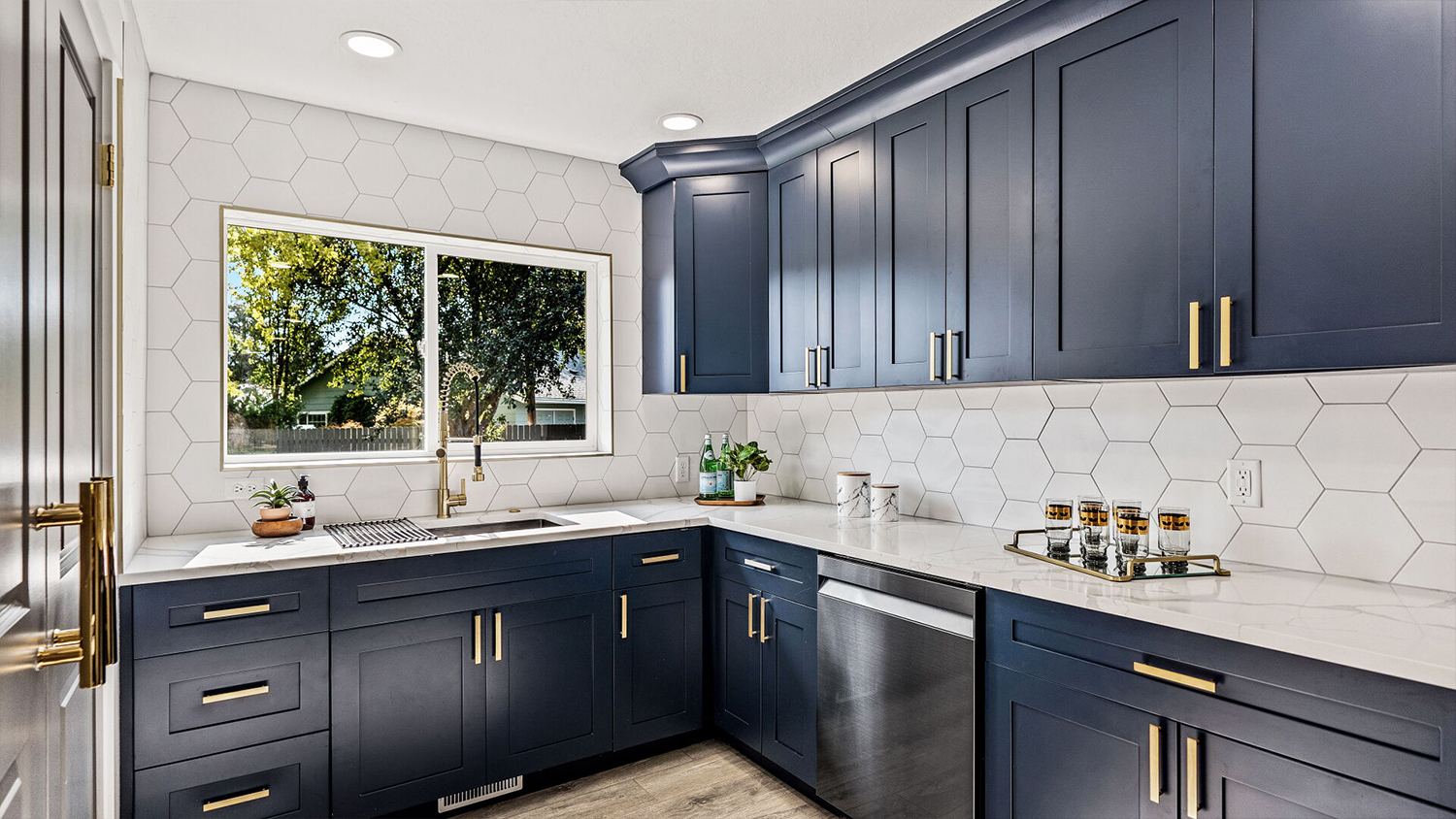
Measuring cabinets may seem simple, but small errors can create costly and time-consuming issues during installation. Whether you’re remodeling a kitchen or installing cabinets in a utility space, precision is essential for a seamless fit and long-term function. Even experienced contractors can run into problems if they overlook small but critical details.
This article breaks down the most common cabinet measurement mistakes and explains how to avoid them. You’ll learn how to assess space correctly, account for irregular surfaces, handle appliance clearances, and ensure hardware and doors work as expected. The tips included can save hours of correction and unexpected expenses down the line.
Why Accurate Cabinet Measurements Matter
Cabinets aren’t just storage; they’re functional elements integrated with walls, floors, plumbing, and appliances. When measurements are off, the entire workflow of a kitchen or room suffers. Misaligned cabinets can block door swings, leave unsightly gaps, or require expensive modifications.
Proper cabinet planning ensures:
- Appliances fit without obstruction
- Drawers and doors operate without interference
- Visual symmetry and alignment with countertops
- Fewer installation delays or on-site changes
Let’s examine where errors most often occur and how to prevent them during planning and installation.
Overlooking Wall Irregularities
Walls are rarely perfectly square or plumb, especially in older homes. Assuming the room is straight can lead to inaccurate cuts and misaligned cabinet placements.
Failing to Check for Bowed or Uneven Surfaces
Before taking any measurements, inspect the wall for bulges, dips, or corners that are not at 90 degrees.
- Use a long level or straightedge across walls and floors
- Identify any inward or outward bowing
- Note irregularities around windows, pipes, or baseboards
These factors must be adjusted for in the layout and fabrication to avoid gaps or force-fitting cabinets during installation.
Ignoring Floor Level Variations
Cabinet bases installed on an unlevel floor can create noticeable tilts and drawer misalignment.
- Use a laser level or a water level across the entire floor span
- Mark the highest point of the floor, then level cabinets upward from there
- Shim carefully, using solid support under high-weight areas like sinks or ovens
Incorrect Appliance Clearance Planning
Cabinets should be measured in relation to appliances, not just the wall dimensions. A common mistake is measuring cabinet spaces without considering the specs of installed or future appliances.

Not Accounting for Appliance Door Swings
Dishwashers, ovens, and refrigerators require extra space for doors to open fully.
- Review manufacturer clearance specifications
- Include handle depth in forward clearance
- Ensure adjacent cabinets and drawers won’t block access
Table: Minimum Appliance Clearance Guidelines
| Appliance | Forward Door Clearance | Side Clearance Needed |
|---|---|---|
| Refrigerator | 36″–42″ | 1″–2″ each side |
| Dishwasher | 27″–29″ | 2″ from cabinet sides |
| Oven (swing door) | 42″ | 2″ from adjacent walls |
Not Considering Heat or Venting Requirements
Some appliances, like built-in ovens or microwaves, need vent spacing or airflow. Crowding them into a tight cabinet section can reduce lifespan or void warranties.
Improper Measurement of Upper and Base Cabinets
Cabinet heights and depths must be measured with precise placement in mind. Misaligning these dimensions leads to both functionality and visual design issues.
Incorrect Height Placement for Upper Cabinets
Upper cabinets too low can crowd countertops; too high and they become unusable.
- Standard height: 18″ between base and upper cabinets
- Total upper cabinet height: 30″ to 42″, based on ceiling
- Adjust height if installing under soffits, beams, or ductwork
Inconsistent Depth Alignment
In a mixed cabinet run, keeping consistent depth alignment is critical.
- Standard base depth: 24″
- Standard upper depth: 12″
- Avoid overlapping deep cabinets unless planning for pantries or ovens
Check these against your overall kitchen footprint, walkways, and traffic patterns.
Misreading Measurement Units or Using Inaccurate Tools

Errors in tape reading, wrong tools, or miscommunication can derail the most detailed plans.
Using Worn or Inaccurate Measuring Tools
Bent tape ends, slack laser measures, or miscalibrated levels skew results.
- Use a rigid steel tape for accuracy
- Calibrate your laser level before starting
- Cross-verify with a second person for long spans
Mixing Metric and Imperial Measurements
Always stick to one system throughout the project. Mixing units can lead to conversion errors or incompatible orders from manufacturers.
Neglecting Space for Trim, Fillers, and Reveals
Trim work and fillers are often afterthoughts, but they affect cabinet alignment significantly.
Failing to Plan for Fillers and Scribe Strips
Cabinets must have space at the edges or between walls to allow for installation tolerance.
- Leave at least 1″ total for fillers (½” per side)
- Scribe strips help hide wall unevenness
- Toe kicks and crown moldings need spacing allowances too
These adjustments help avoid needing to cut into walls or shift entire rows of cabinets later.
Common Questions
What is the standard gap between cabinets and walls?
Typically, installers allow ½” to 1″ of space between the cabinet and the wall to accommodate uneven surfaces or filler pieces.
How do you know if walls are square before cabinet installation?
Use a framing square or 3-4-5 triangle method to check for square corners. If the diagonals don’t match, your walls are not square.
Do base cabinets sit flush with the wall?
In most cases, base cabinets are set slightly off the wall (by ¼” to ½”) to allow for plumbing and leveling adjustments.
Should you measure appliances or cabinet openings first?
Always measure actual appliances first, then plan cabinet openings accordingly. Appliance specs are the fixed variable.
Conclusion
Measuring for cabinets is more than just checking wall length. It requires careful attention to detail, an understanding of how cabinets interact with surrounding features, and adjusting for real-world imperfections. From planning appliance clearances to accounting for floor level changes, each step contributes to a smoother installation and better end result.
By anticipating the common errors outlined here, contractors and DIYers can reduce delays, avoid rework, and ensure their finished spaces are both functional and professionally aligned. Precision in the beginning always pays off by the end of the project.
FAQs
How much space should be left between a cabinet and a refrigerator? Leave at least 1″–2″ of space on each side of a refrigerator to ensure proper air circulation and prevent overheating.
What’s the standard height for kitchen base cabinets? Standard height, including countertop, is 36 inches. The cabinet box itself is typically 34.5 inches, with a 1.5″ countertop.
Can I install cabinets before flooring? It’s usually better to install flooring first, especially if using floating floors. If cabinets go in first, floor height must be calculated into appliance gaps.
What tools give the most accurate cabinet measurements? A steel tape, laser level, and a carpenter’s square are most reliable. Always double-check with at least two tools when measuring long runs.
Do all walls need to be perfectly level for cabinet installation? Not perfectly, but they need to be accounted for. Uneven walls or floors must be adjusted using shims and scribe fillers to ensure a clean, straight cabinet line.
Reviewer: Chloe Martinez brings 8 years of experience in home improvement. Feedback from Chloe helped shape this post to better support companies working to strengthen their reputation and expand their reach.









